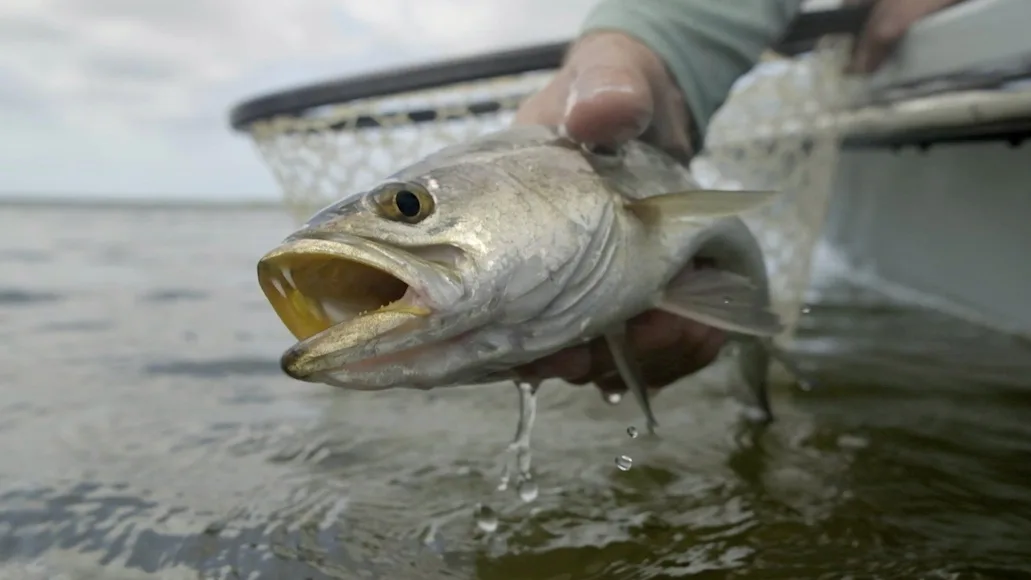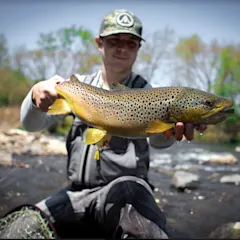Speckled sea trout, also known as spotted sea trout, are a popular inshore gamefish species found across the eastern and southern coasts. While they resemble their freshwater cousins in looks, these fish have nothing else in common with rainbow
, brown
, and brook trout
. Sea trout live in shallow saltwater bays and feed on crustaceans, shrimp, and small baitfish. Their aggressive nature, accessibility, and delicious table fare make them a top gamefish for both conventional and fly anglers.
Fishermen will often find sea trout in large schools, which can make for exciting bursts of action. On ultra-light tackle, smaller sea trout put up a hard fight, but don’t be fooled; these fish can also grow to impressive sizes. Live bait is always a great option, but sea trout will also aggressively take artificial lures and flies.
No matter your style of fishing, speckled sea trout can serve as the target species or fun bycatch when looking for snook, redfish, and other inshore species. Either way, here is a quick overview of sea trout habitat, behavior, and fishing tactics.
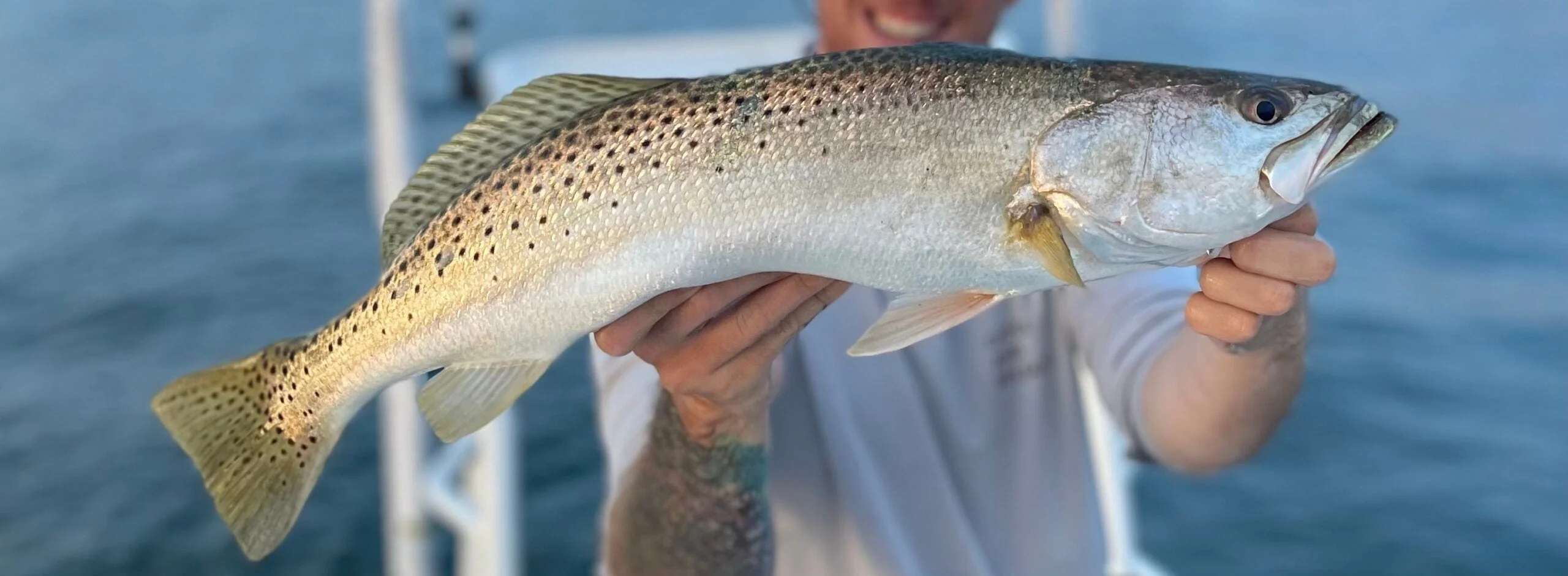
An angler holds up a 22-inch speckled sea trout. J.P. Reynal
Spotted Sea Trout Appearance and Biology
Despite their name, spotted sea trout
are actually a member of the drum family, which includes red and black drum. They get their name from the distinct spotting pattern extending from their back to their dorsal fin and a profile similar to that of freshwater trout. These fish have a greenish/gray back, fading to a white underbelly. They are often mistaken for weakfish; however, weakfish lack the spots sea trout are known for. Speckled sea trout also have distinct teeth, with their two front canines resembling fangs.
Average speckled sea trout range from 10 to 20 inches, with true “gator” trout reaching upwards of 40 inches. Their diet changes as they grow. Smaller fish key in on crustaceans, while young adults feed on shrimp and small baitfish. Large trophy fish almost exclusively key in on bigger baitfish like mullet or pinfish. These large fish, often known as breeders, are crucial to sustaining healthy sea trout populations. An adult female can lay as many as 100,000 eggs. Be sure to handle the big fish with care and release them. The smaller sea trout are better eaters anyway.
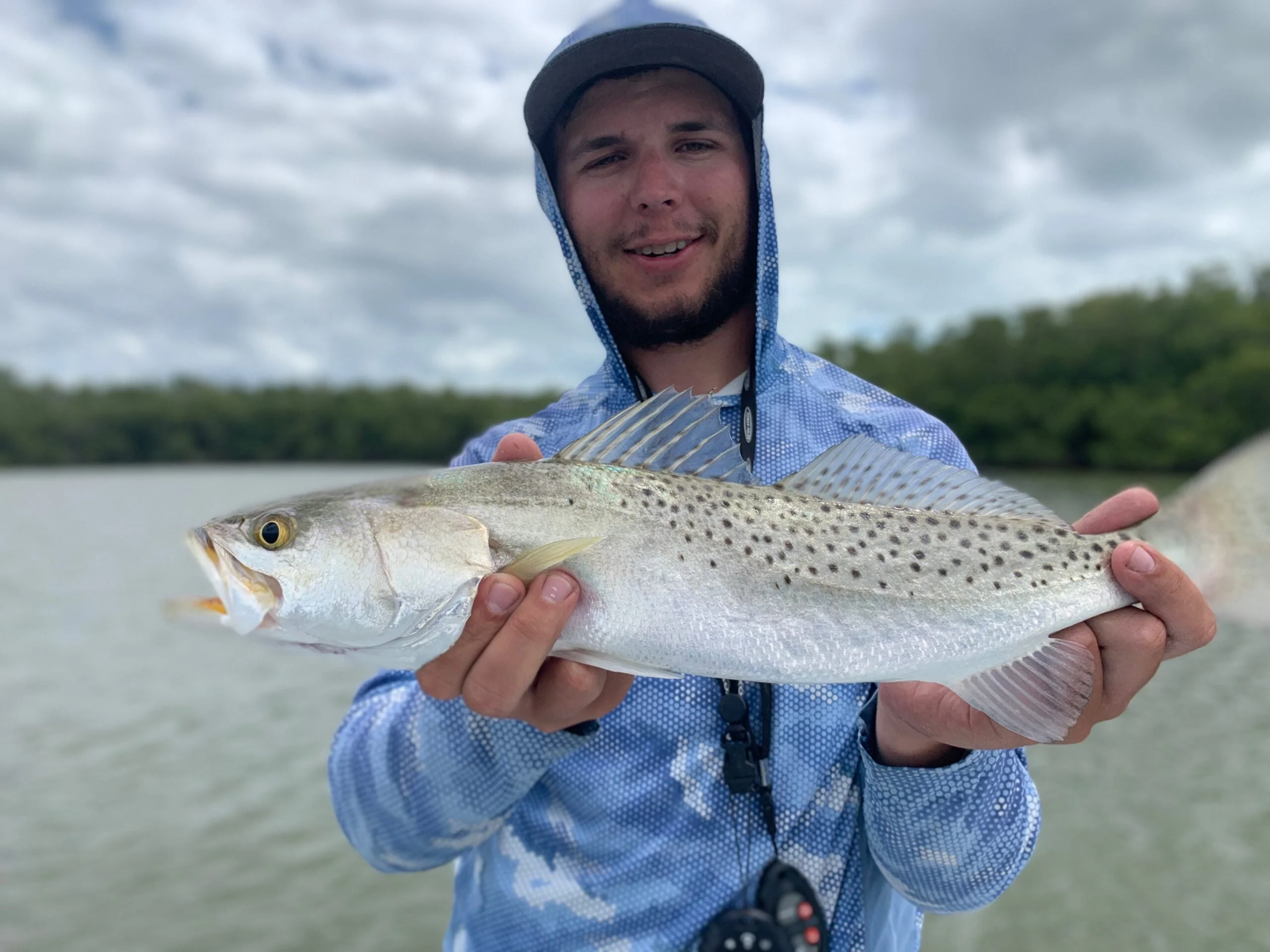
The author holds up a good-sized speckled sea trout. Max Inchausti
History and Habitat
Sea trout are native to much of the eastern United States, ranging from the southern parts of Texas to Massachusetts. However, the biggest populations are found from Texas to the Carolinas. In the warmer months, these fish are found throughout shallow bays across their range. They prefer structure, so bays with ample vegetation and oyster beds are a must. These areas will typically hold schools of fish. If you catch one, chances are there are more. If the habitat is not present, look elsewhere. Trout will use this habitat because it holds bait and supplies cover.
In the northern areas of their distribution, fishing can be seasonally dependent. The warmer months bring higher water temperatures and more trout, making this the best time to target them in shallow-water bays. In the cooler months, waning water temperatures cue trout to move deeper and find warmer water.
Speckled Sea Trout: Fishing Tactics
Fishing for sea trout can provide an abundance of opportunities and delicious table fare. Whether it’s your first time targeting them or you’re looking to hone your skills, here’s what you need to know to catch speckled sea trout.
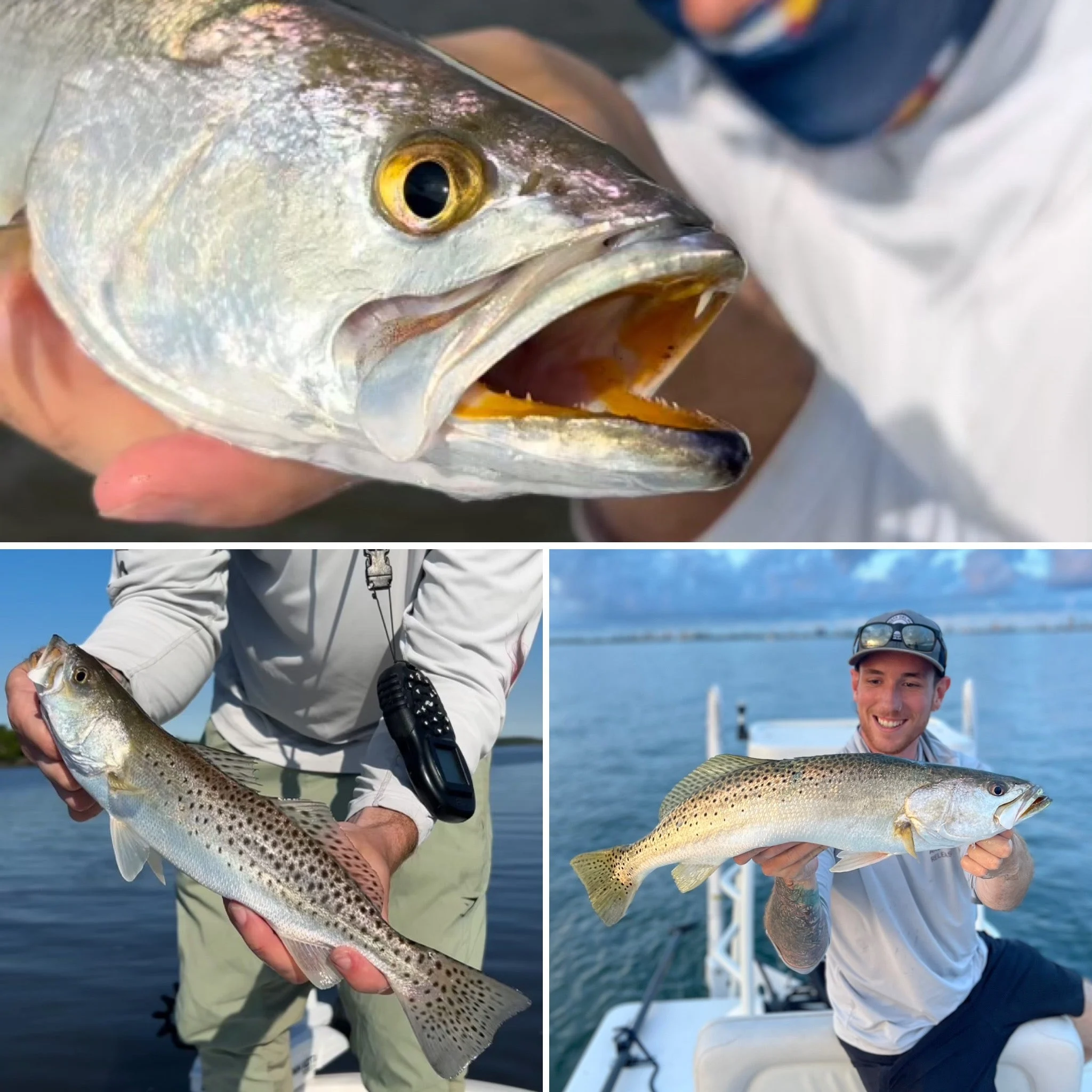
From top clockwise: A close-up of speckled sea trout teeth; an angler holds up a big sea trout; a small sea trout with beautiful spots. J.P. Reynal
Live bait
Anglers looking to catch a mess of trout should fish live bait. It’s incredibly effective at catching trout of all sizes. The most common technique is fishing a popping cork
with a live shrimp. A popping cork is a device consisting of a suspended float followed by the leader and a hook. The cork serves two purposes: It allows anglers to cast light shrimp in a fair way, and it attracts trout with its popping motion. To fish this setup, cast it out, reel in any slack, and jerk the rod tip to create a popping action. The commotion will attract fish and is a great way to get started. This technique also excels when fishing weed beds. Having the shrimp suspended across a weed bed prevents it from getting snagged and will lure hungry speckled sea trout out of the grass.
Another common technique is to fish a shrimp on the bottom with a small sinker. When trout are congregated in deeper water, this is an excellent way to target them. The shrimp sinks to their level and offers an easy meal for a waiting fish. For larger sea trout, in particular, pinfish or mullet can be rigged on a small circle hook and allowed to swim freely. Although large sea trout can be very picky, so patience is the name of the game when targeting big fish.
Artificials
For anglers who prefer the challenge of fishing artificial lures, you are in luck. Baits such as small swimbaits, swim flukes, and spoons are all effective. If you are targeting fish on oyster beds and grass flats, spoons are a great choice. A small gold or silver weedless spoon allows you to get in tight to structure and not snag. Fish the spoon with quick twitches, followed by letting the spoon fall and flutter. The erratic movement and flashing action mimic an injured baitfish and often draws a strike.
For covering water, paddle tail swimbaits are my go-to lure. They allow anglers to cover a lot of water with repeated casts, and the swimming action is tantalizing to fish. In general, I fish dark baits in dark water and light baits in clearer water. Rig these on a small jighead for the best success.
My favorite speckled sea trout fishing technique is rigging swim flukes on a jighead. The added weight of the jighead allows you to fish in varying water columns. Fish it with a steady retrieve and consistent rod twitches for a side-to-side jerking movement. More often than not, this is the ticket to catching even the wariest trout. There are a lot of color options, but baby bass never fails.

